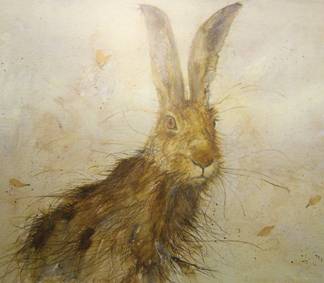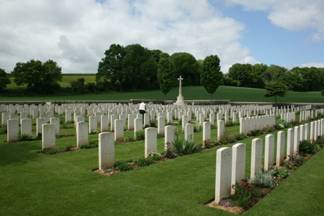In a poem Hares of the Somme I speculated as to how these creatures survived the Great War. In “Gas” The Story of the special Brigade (RE) by Major General C.H. Foulkes CB CMG DSO reference is made to the efforts of British gas on pets and wildlife, which appeared in a German newspaper the Frankfurter Zeitung.

Eagwyrt by Kate Wyatt.
“All the pets in the trenches suffer from the gas attacks. The Guinea-Pigs are the first to scent the gas and the cats also complain at once. Many dead rats and mice are found in the trenches after gas attacks. Owls are greatly excited. Behind the front fowls and ducks are said to become restless a quarter of an hour before the gas clouds approached; and the gas kills ants and caterpillars, beetles and butterflies. I found a hedgehog and an adder both killed by gas. The only birds that seem indifferent to gas are the sparrows.”
Foulkes also observes ‘Pigeons too, seem to have been found susceptible, because the Germans kept their carrier pigeons in gas tight boxes which had ordinary respirator drums screwed into one side.
In another paragraph it was found that goats and men are equally resistant to prussic acid gas while mice have shown to be ten times as susceptible as men are to carbon monoxide for which reason miners use them as well as canaries as detectors of the presence of this gas.
A man’s eyes are by far the most sensitive of his organs, and he is ten times as susceptible to lachrymators compared with a dog and a thousand times compared with a horse.
Foulkes records that on the Somme battlefields the British carried out more than fifty gas cloud attacks in aid of the infantry operations in the course of the first eighteen days and over a hundred by the end of the year (1916).
Interestingly no mention in “Gas” is made of Hares Rabbits Foxes or Badgers, which are now the latest form of wildlife to be gassed deliberately.
The Germans first used Gas at 1st Ypres 22nd April 1915. In retaliation the British used gas at Loos in September 1915 by which time the Germans had introduced gas shells. With prevailing winds on the Western Front from the west the British persevered with ‘gas cloud’ delivery and later used Liven’s Projectors and 4” Stokes Mortars to deliver the most lethal gas phosgene.
I conclude that the ’Hares of the Somme’ survived by “making themselves scarce and out of harms way”.
The Hares of the Somme: ‘Jacobs Ladder’
The hares of the Somme, on Pal’s trips we see them….
This year there was one at High wood, another at Hamel.
The Hamel Hare disturbed by our visitation, froze, and eyed us with fear, before seeking refuge behind the Cross of Sacrifice. Hamel war Graves Cemetery is partly excavated into the foot of a hill, and has retaining walls on two sides, which meet at a high right-angled corner, here the Hare became trapped.
No where to run, and no escape route other than four or more feet vertically. The Hare hunched on it’s haunches and leapt upwards, clawing at the wall, but failed to reach the top. Again it tried, only to fall back absorbing the shock.

Hamel Military Cemetery Pals Tour 2009 by Stephen Page
Then, after a pause, to rewind its spring, the third attempt, as if by ‘Jacobs Ladder’, was lucky….
It went up over the top and away to the grassy slopes beyond, and adventures new.
Edmund Blunden records* that Hamel was the site of a hugh supply dump for the Somme battles. ‘Jacobs Ladder’ was a steeply inclined communications trench with steps, up to the high of Mesnil above, which was under enemy observation. The War Graves Cemetery was probably built on the site of a former ‘Soldiers Cemetery.
Hares of the Somme
On Pals trips we see them,
The Haers of the Somme,
running pell mell on
ground where young men once fell.
To Jack Rabbits they’re akin,
born with eyes wide open,
and fully furred. They live in
Forms , or folds in the ground
Not warrens, below unseen
as the Huns in nineteen sixteen;
who, on that first ghastly day
surfaced, and machine gunned
until the fields ran with blood.
How did the Hares manage
to survive the Great War.
God knows what horrors
their ancestors saw.
with innate animal instinct
did they evacuate the ground,
and quietly await events:
whilst armies fought all around,
intent on killing each other.
Today, the Hares of the Somme
grow healthy and strong:
as with boundless energy and no fear
they run, oblivious
of what once happened here
EDP May to August 2006.
So next time we travel the Somme countryside in our coach with its elevated view across the battlefields, look out of the windows and you to may spot a Hare of the Somme.
Steve and Eric Page 2009
Thanks Steve for that great contribution to the site.